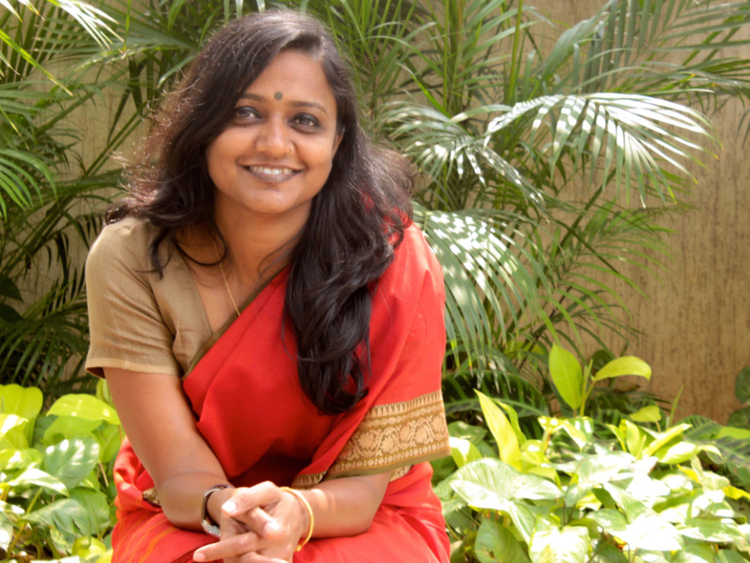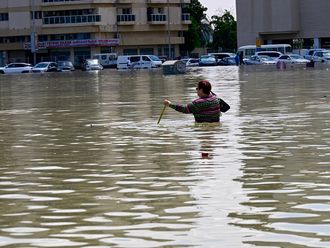
Fatima Ahmad was just not in favour of sending her only child, Zara, to a nearby government school in Mumbai, India’s financial capital. The 27-year-old mother felt education in a government school was a waste of time and would not help her daughter in getting meaningful employment. And if the fate of children in the neighbourhood, who haven’t gained much after spending years in a government school, is anything to go by, her view is not ill-founded.
Fatima is not the only one. An increasing number of Indian parents are deciding against educating their children in government schools. Lack of quality education is one of the biggest reasons behind this thinking.
Government schools in India are the largest provider of education. The country boasts the largest school system in the world with nearly 1.5 million elementary schools and almost 200 million enrolled students. With the implementation of Right to Free and Compulsory Education Act (RTE) of 2009, India now has almost universal enrolment at lower primary level (99.8 per cent) and adult literacy has risen to more than 75 per cent (up from 65 per cent in 2001).
India’s education system is a huge success story as far as elementary education is concerned. It has been largely focused on providing access to education in all nooks and corners of the country. Sarva Shiksha Abhiyan (SSA) in 2003 and the enactment of RTE Act have ensured that India has nearly achieved its goal of universal access to elementary education. The battle now, however, is the quality of education being provided in government schools.
“I went to a government school in our village and what do I do for a living? I believe government schools in a city are not very different from those in villages. I want a different life for my children and I don’t think a government school can help in that,” says Bubbly Das, a domestic worker whose 10-year-old son Satya is studying in a prominent school in South Delhi. Instead of sending her son to a government school, Bubbly is utilising a provision in the RTE Act, which stipulates that private schools admit at least 25 per cent students from low-income families.
There are many reasons for the falling popularity of government schools. “The decline in enrolment in government schools and some shift to private schools might be largely related to the poor quality of education offered in government schools, since it is free or offered for a nominal fee,” says the recent Annual Status of Education Report (2014), a household survey to assess children’s schooling status and basic learning levels in reading and arithmetic.
The Gross Enrolment Ratio (GER) in primary education rose from 90 in 2003-04 to 106 in 2013-14. Similarly, the Annual State of Education Report (ASER) shows that enrolment among children ages 6 to 14 years is very high with nearly 96 per cent attending school.
However, despite the increase in enrolment rates, retention of schoolchildren continues to remain a cause for concern as GER falls from 106 in primary education to 39 in senior secondary schools.
Besides the questionable quality of education, most of the government schools use vernacular languages as the medium of instruction, which hardly prepares students for the job market in the country, where English speaking candidates are given preference. “One of the main reasons for parents opting out of the government school system is their desire for their children to learn English. On a national level, recent evidence indicates that the enrolment in English medium schools increased by more than 250 per cent over an eight-year period,” says a report on Public-Private Partnerships In School Education by Central Square Foundation and Federation of Indian Chambers of Commerce and Industry (FICCI).
According to the recent report by Praja, a civil society organisation, while there has been a drop in the number of enrolment in vernacular medium schools in Mumbai, there has been a corresponding increase in enrolment in English-medium schools.
Public-private partnership
Government schools in many states are seeking to change this very perception by forming Public-Private Partnerships (PPP) with NGOs that bring in new methods of teaching and engagement with the local community.
This model efficiently utilises the government infrastructure along with its various schemes to benefit the unprivileged and at the same time, brings in innovation and accountability, which the government schools have traditionally lacked.
PPP in education can introduce a positive disruption in the government school system that can potentially not only create models of excellence but also address access gap in secondary education. Several countries, such as the United States, the UK and Pakistan, have implemented PPPs to provide education to the unprivileged sector.
Punjab, Rajasthan and Maharashtra are some of the states that have partially implemented PPP or are in the process of implementing it. There are generally two models of PPP being following in India. The first is full school management with private partner teachers wherein a private partner can manage an existing or new school to provide education with its own teachers and principal. In the second model, the private partner is just given a part of the school to manage. In both cases they are free to recruit teachers and implement innovative methods of education. They generally prefer to generate funds to manage schools.
“Across India, major metropolitan areas such as Mumbai, Chennai, Pune and Ahmedabad have experienced up to 25 per cent decline in enrolment in government schools over the past 10 years and simultaneously their education budgets have almost doubled,” says a PPP report by the Central Square Foundation.
In Mumbai, most of the schools under the PPP model are English medium. Various civil society organisations such as Aseema and Naandi Foundation are working with the Brihanmumbai Municipal Corporation (BMC) under this model.
“When we took over BMC schools, the infrastructure was not good. There was a shortage of teachers. Even the toilets were not functioning properly,” says Dilbur Parakh, founder, Aseema, which has adopted a number of BMC schools. The organisation also runs a school in Igatpuri in Maharashtra.
Parakh says that there were only 100 students in the BMC schools in Santa Cruz when Aseema took over but now the number has increased to nearly 600 students.
The hunger for quality education is clearly there, and government schools not being able to move ahead with the times has led to the emergence of PPP model in education.
A key part of PPP model is engagement with the community. Regular interactions with the local community go a long way in checking dropout rates.
“We regularly organise classes for parents as well. We also organise a number of medical camps and other activities to engage with the community. Through various activities we try to ensure that there is a regular communication between the parents and the school. Whenever a child is absent for more than two or three days without any intimation, we get in touch with the family. All these efforts ensure that the dropout rate is minimum,” says Anandhi Yagnaraman, senior director of operations, Akanksha NGO, which is managing eight BMC schools. The organisation is also working with eight schools of the Pune Municipal Corporation.
Many believe that PPP is a sign of failure of the government. There is also a resistance from the government employees to accept this model. For instance, teacher unions in Mumbai have opposed PPP because they see it as a form of privatisation and are concerned that this model will lead to a loss of jobs.
Most of the municipal corporations have huge budgets for education. Even so, they need to form an alliance with outside agencies, such as NGOs, that are also involved in generating funds for managing schools. The government also needs to implement regular checks and mechanisms to ensure that quality education is being imparted.
“PPP in school education also faces the challenge of inadequate political backing. In the absence of an organised lobby for PPPs, the implementation of these policies has been dependent on ad-hoc interest by elected officials or bureaucrats. Further, traditional distrust between private education operators and governments limits the possibility of constructive dialogues on PPPs,” says the Central Square Foundation Report.
There is little doubt that PPP model is here to stay but at the same time, the government schools should continue to focus on implementing strategies to attract and retain students on their own so they stay relevant in the changing scenario.
Gagandeep Kaur is an independent journalist and writes on gender, development and technology. She tweets as @gagandeepjourno














